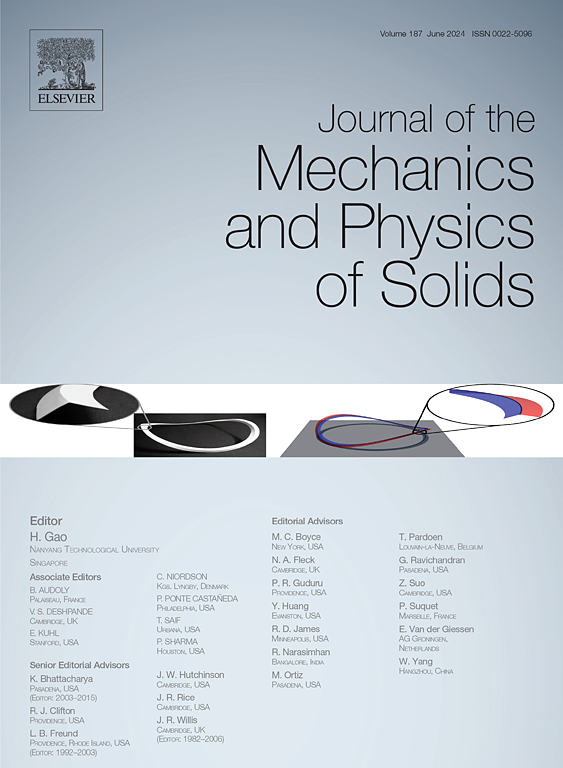在高阶均匀化中固定非正能量
IF 6
2区 工程技术
Q2 MATERIALS SCIENCE, MULTIDISCIPLINARY
引用次数: 0
摘要
周期弹性结构二阶均匀化产生的能量泛函通常具有负梯度模。这种不理想的性质是由于小尺度分离参数幂次中能量膨胀的截断造成的。通过重新审视Cholesky的LDLT分解,我们提出了一种替代截断方法,该方法在保留精度顺序的同时恢复正性。我们在连续和离散的各种周期结构上说明了这种方法,并得到了均匀化能量正且精确到二阶的紧致解析表达式。该方法还可以解决二阶降维产生的能量泛函存在类似的非正性问题。它自然地延伸到二阶之外。本文章由计算机程序翻译,如有差异,请以英文原文为准。
Fixing non-positive energies in higher-order homogenization
Energy functionals produced by second-order homogenization of periodic elastic structures commonly feature negative gradient moduli. This undesirable property is caused by the truncation of the energy expansion in powers of the small scale separation parameter. By revisiting Cholesky’s LDLT decomposition, we propose an alternative truncation method that restores positivity while preserving the order of accuracy. We illustrate this method on a variety of periodic structures, both continuous and discrete, and derive compact analytical expressions of the homogenized energy that are positive and accurate to second order. The method can also cure the energy functionals produced by second-order dimension reduction, which suffer similar non-positivity issues. It extends naturally beyond second order.
求助全文
通过发布文献求助,成功后即可免费获取论文全文。
去求助
来源期刊
CiteScore
9.80
自引率
9.40%
发文量
276
审稿时长
52 days
期刊介绍:
The aim of Journal of The Mechanics and Physics of Solids is to publish research of the highest quality and of lasting significance on the mechanics of solids. The scope is broad, from fundamental concepts in mechanics to the analysis of novel phenomena and applications. Solids are interpreted broadly to include both hard and soft materials as well as natural and synthetic structures. The approach can be theoretical, experimental or computational.This research activity sits within engineering science and the allied areas of applied mathematics, materials science, bio-mechanics, applied physics, and geophysics.
The Journal was founded in 1952 by Rodney Hill, who was its Editor-in-Chief until 1968. The topics of interest to the Journal evolve with developments in the subject but its basic ethos remains the same: to publish research of the highest quality relating to the mechanics of solids. Thus, emphasis is placed on the development of fundamental concepts of mechanics and novel applications of these concepts based on theoretical, experimental or computational approaches, drawing upon the various branches of engineering science and the allied areas within applied mathematics, materials science, structural engineering, applied physics, and geophysics.
The main purpose of the Journal is to foster scientific understanding of the processes of deformation and mechanical failure of all solid materials, both technological and natural, and the connections between these processes and their underlying physical mechanisms. In this sense, the content of the Journal should reflect the current state of the discipline in analysis, experimental observation, and numerical simulation. In the interest of achieving this goal, authors are encouraged to consider the significance of their contributions for the field of mechanics and the implications of their results, in addition to describing the details of their work.

 求助内容:
求助内容: 应助结果提醒方式:
应助结果提醒方式:


